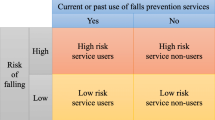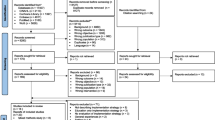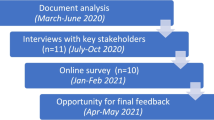Abstract
The Prevention of Falls Network Europe (ProFaNE) aims to improve quality of life of the ageing population by focussing on a major cause of disability and distress: falls. The thematic network is funded by the European Commission and brings together scientists, clinicians and other health professionals from around Europe to focus on four main themes: taxonomy and coordination of trials, clinical assessment and management of falls, assessment of balance function, and psychological aspects of falling. There are 24 members across Europe as well as network associates who contribute expertise at workshops and meetings. ProFaNE, a 4-year project which started in January 2003, aims to improve and standardise health care processes, introducing and promoting good practice widely across Europe. ProFaNE undertakes workshops that bring together experts and observers around specific topics to exchange knowledge, expertise and resources on interventions that reduce falls. A key document for policy makers around Europe, written by ProFaNE members, was published by the World Health Organisation in March 2004. ProFaNE’s website has both public and private areas with resources (web links to falls prevention, useful documents for policy makers, researchers and practitioners) and a discussion board to encourage informal networking between members and the public. The ultimate aim of ProFaNE is to submit a collaborative bid to undertake a multi-centre, randomised controlled trial of a multi-factorial fall prevention intervention with peripheral fracture as the primary outcome. The success of the networking and relationship building in the first year and a half of ProFaNE’s work makes this an achievable goal.

Similar content being viewed by others
References
Aminian K, Najafi B (2004) Capturing human motion using body-fixed sensors: outdoor measurement and clinical applications. Comput Animation Virtual Worlds 15:79–94
Chang JT, Morton SC, Rubenstein LZ, Mojica WA, Maglione M, Suttorp MJJ, Roth EA, Shekelle PG (2004) Interventions for the prevention of falls in older adults: systematic review and meta-analysis of randomised clinical trials. BMJ 328:680–687
Donovan-Hall MK, Yardley L (2003) Getting together to prevent falling in older people: A multidisciplinary and multinational approach. Health Psychol Update 12:38–39
Gillespie LD, Gillespie WJ, Cumming R, Lamb SE, Rowe BH (2004) Interventions to reduce the incidence of falling in the elderly. Musculoskeletal injuries module of the Cochrane Database of Systematic Reviews, issue 4
Helbóstad JL, Moe-Nilssen R (2003) The effect of gait speed on lateral balance control during walking in healthy elderly. Gait Posture 18:27–36
Mulder T, Zijlstra W, Geurts ACH (2002) Assessment of motor recovery and decline. Gait Posture 16:198–210
O’Loughlin J, Robitaille Y, Boivin J, Suissa S (1993) Incidence of and risk factors for falls and injurious falls among the community-dwelling elderly. Am J Epidemiol 137:342–354
Skelton DA, Todd C (2004) What are the main risk factors for falls amongst older people and what are the most effective interventions to prevent these falls? How should interventions to prevent falls be implemented? Health Evidence Network, World Health Organisation, Denmark
Tinetti ME (2003) Clinical practice. Preventing falls in elderly persons. N Engl J Med 348:42–49
Tinetti M, De Leon C, Doucette J, Baker DI (1994) Fear of falling and fall-related efficacy in relationship to functioning among community-living elders. J Gerontol 49:M140–M147
Zijlstra W (2004) Assessment of spatio-temporal parameters during unconstrained walking. Eur J Appl Physiol 92:39–44
Acknowledgements
The authors are participants in the ProFaNE thematic network, which is a project in Key Action #6 (The Ageing Population and their Disabilities), part of the European Commission’s Fifth Framework, Quality of Life and Management of Living Resources Programme, funded by the European Commission (QLRT-2001-02705). The content of the manuscript does not represent the opinion of the European Community, and the Community is not responsible for any use that might be made of the information presented in the text.
Author information
Authors and Affiliations
Corresponding author
Rights and permissions
About this article
Cite this article
Skelton, D.A., Becker, C., Lamb, S.E. et al. Prevention of Falls Network Europe: a thematic network aimed at introducing good practice in effective falls prevention across Europe. Eur J Ageing 1, 89–94 (2004). https://doi.org/10.1007/s10433-004-0008-z
Published:
Issue Date:
DOI: https://doi.org/10.1007/s10433-004-0008-z




